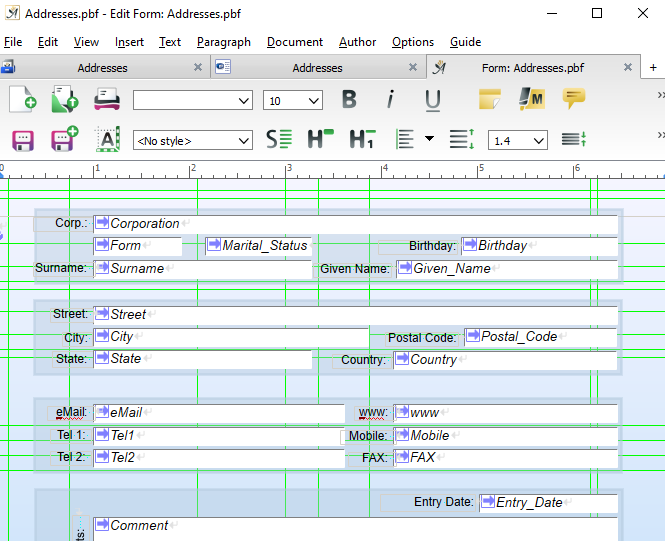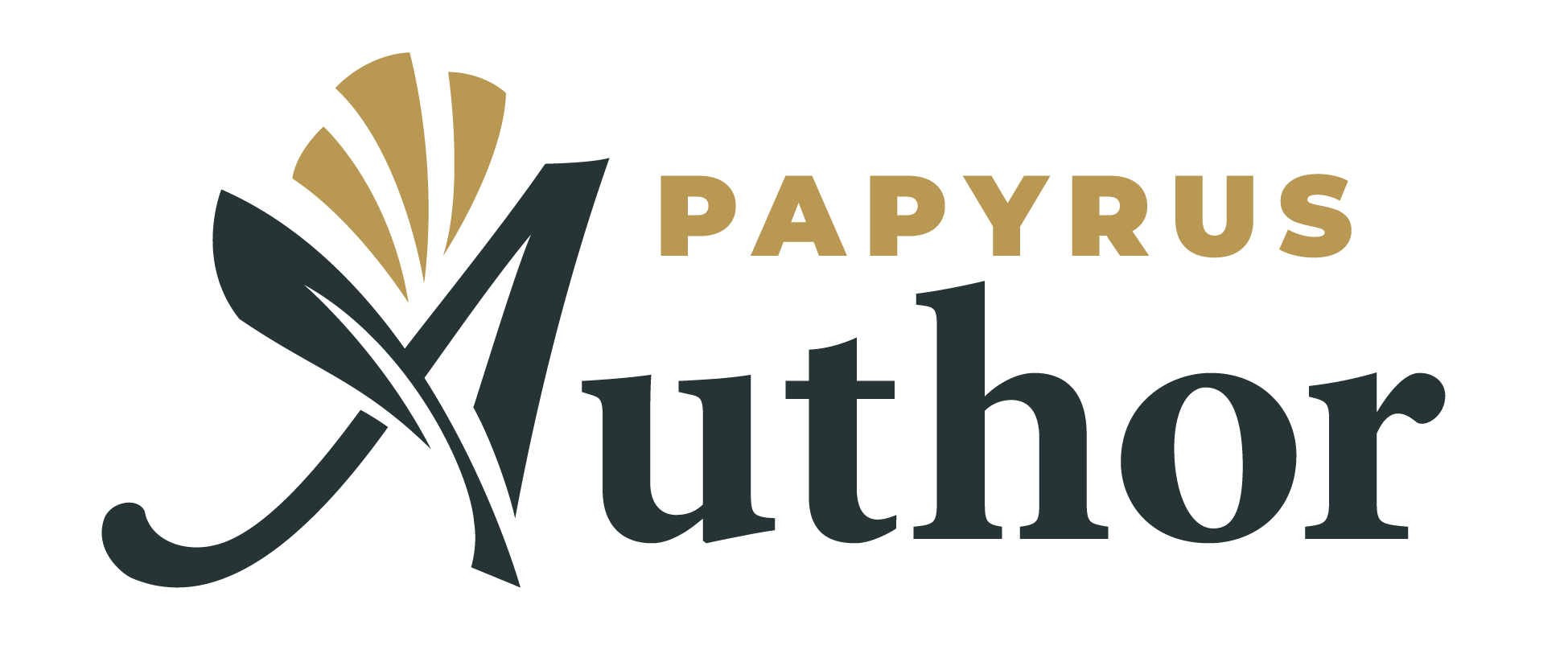If you want to fill a record with information, you can use the “Entry Form” dialog (sometimes called the “input mask” in other databases).
To edit an existing record, you can double click on the record in the table. The “Entry Form” dialog can also be accessed either under the “Edit” menu or in the context menu by selecting the “Display Record” option.
The same applies to creating a new record. An entry form for a new record can be accessed under “Edit,” in the context menu, or by clicking on “Enter New Record” ( /
/  ) icon in the Papyrus Base toolbar.
) icon in the Papyrus Base toolbar.
The first three icons in the entry form dialog are all related to changes in your record.
The green checkmark  means “Apply Changes to Record” and by clicking on it you will change the entry in the record. If you close the entry form dialog before clicking on this icon, Papyrus Base will ask whether you would like to save or discard your changes.
means “Apply Changes to Record” and by clicking on it you will change the entry in the record. If you close the entry form dialog before clicking on this icon, Papyrus Base will ask whether you would like to save or discard your changes.
The lifesaver  is your “undo” icon, and will undo any changes you did not wish to make.
is your “undo” icon, and will undo any changes you did not wish to make.
If you want to undo an “Undo” action, you can use the “Redo” icon, which is the lifesaver with an arrow  . This icon is only available when you have “undone” at least one action with the “Undo” icon (or keyboard shortcut). Each time you undo an action, you can then use “Redo” if you change your mind.
. This icon is only available when you have “undone” at least one action with the “Undo” icon (or keyboard shortcut). Each time you undo an action, you can then use “Redo” if you change your mind.
The next four blue arrow icons allow you to page through your database. The double arrows will bring you to the very first record  in your table, or the very last
in your table, or the very last  . The single arrows will jump one record backward
. The single arrows will jump one record backward  or forward
or forward  .
.
Using one of the arrow buttons to jump to a new record will automatically apply changes made to the previous record, if this has not already been done via the “Apply” icon. These changes can be undone by clicking back to the record and using “Undo”.
The index card  /
/  icon (normal database / Character Database) will open a new record with a blank entry form (just like in the main table window).
icon (normal database / Character Database) will open a new record with a blank entry form (just like in the main table window).
The trash can  will delete a record permanently (Papyrus Base will ask first to confirm).
will delete a record permanently (Papyrus Base will ask first to confirm).
The “Report” dialog for creating reports (an output of records as a text document) can be opened with the  icon.
icon.
The drop-down menu displaying a percent sign is where you can zoom in or out.
The final icon “To Document” will take you to your Papyrus Author document.
You can print the entry form itself from the context menu and selecting “Print entry form” or “Form” → “Print entry form”.
To make it easier for you to use special characters, you can access the “Character Set…” via the context menu, in which you can see the full Unicode spectrum of available letters.
You also have options in the context menu to set an entry in a data field as a default (“Make Field Contents the Default for Data field”) or to “Set All Field Contents as Defaults.”
Editing Entry Forms
If you want to change the entry form for displaying and editing individual records, choose “Edit Entry Form” in the “Database” menu or from the context menu of any open entry form.

An entry form in edit mode. Green magnetic guidelines help to position fields
When you create a new database, Papyrus Base provides you with an entry form automatically. The first time you view your record in the entry form, Papyrus Base will ask whether you would like to edit the entry form itself. You have the option to stick with the pre-defined entry form and can always edit it later.
The labels for the entry fields are also text objects whose position, font, and text itself can be changed (options can be found in the toolbar or the “Text” menu); the same goes for the entry fields themselves.
The size and style attributes of the text objects can also be changed as you like. Simply select a text object with your mouse (then you will see the resizing handles), move it anywhere you like, and change the text style or size. The size of an entry field is really only there for looks; The Papyrus Base entry fields can hold almost any amount of text. If your entry field is “too full,” a red cross will appear in the lower-right corner of the field in the normal edit record mode, so that you can see that it contains more text than can be displayed.
The type of manipulations possible for text objects and entry fields are determined by the template “_DBFORM.PAP” in the Papyrus Author folder “[Papyrus Author]\Modules\Templates.fix\”.
To position your text objects, you can use the Papyrus Base magnetic guidelines. You can pull the horizontal guideline out of the ruler in the toolbar with your mouse; the vertical guideline can also be grabbed from the left edge of the window and pulled into the entry form window for editing.
If you want to add a new entry-field text object, for a new data field, for example, you can copy a field that looks about the size you would like by dragging it to the place you want, holding down the ![]() key (Win) /
key (Win) / ![]() (Mac) and clicking on it.
(Mac) and clicking on it.
Double-clicking on the data field description will open the “Data Field…” dialog (as will clicking on “Data Field” in the context menu).
The list contains all data fields currently in your database. Clicking on a data field name will allow you to use the corresponding button and “insert” it into your entry form.
